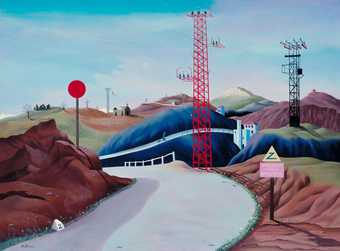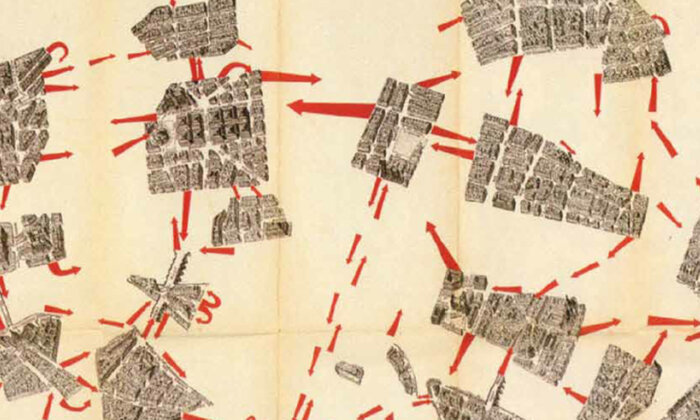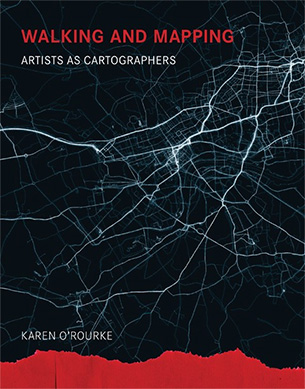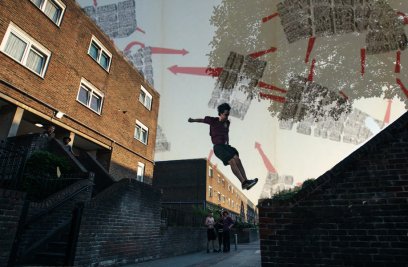SITUATIONIST PSYCHOGEOGRAPHY REALISED
Joy at the café: Tweets reveal where in cities people express different emotions
Study in London, San Francisco uses social media and geographic data to link emotions to detailed locations
Peer-Reviewed PublicationIMAGE: CITYWIDE USE OF SOCIAL MEDIA. view more
CREDIT: BUFFIK, PIXABAY, CC0 (HTTPS://CREATIVECOMMONS.ORG/PUBLICDOMAIN/ZERO/1.0/)
An analysis of nearly 2 million Tweets made by people in London and San Francisco explores specific events and types of locations that are associated with different emotions. Panote Siriaraya of the Kyoto Institute of Technology, Japan, and colleagues present these findings in the open-access journal PLOS ONE on February 1, 2023.
A growing body of research examines social media posts and location data to explore human behavior and emotions; for instance, to compare levels of happiness between geographic regions. However, much of that work has been limited to larger geographic scales and is focused on just one emotion at a time, or on a general assessment of positive versus negative emotion.
Siriaraya and colleagues now demonstrate how human emotional expression can be explored at a finer-grained level using Tweets and information on specific buildings, businesses, and other locations of interest from the public platform Open Street Map. They used computational tools known as neural networks to analyze nearly 2 million Tweets made by more than 200,000 people in London and San Francisco, identifying when and where people expressed anger, anticipation, disgust, fear, joy, sadness, surprise, or trust.
The analysis showed that different location types were associated with expression of different emotions. For instance, in both cities, tweets made in train stations, bridges, and other transportation sites tended to express less joy and more disgust. Tweets from hotels and restaurants showed higher levels of joy. Additionally, proximity to certain sites—and not just being within the sites—was associated with a difference in expressed emotions.
Specific events appeared associated with higher levels of specific emotions; for instance, San Francisco users displayed their highest levels of anger, disgust, and sadness on the day of the 2017 Women’s March, and London users showed high levels of fear and sadness during two local terrorism attacks. New Year’s Eve coincided with high levels of joy in both cities.
The researchers caution against overgeneralizing their results; for instance, the study only included Tweets in English. Nonetheless, they could help pave the way to additional fine-grained research to inform such fields as urban planning and tourism.
The authors add: “Our study highlights how it is possible to portray the characteristics of fine-grained emotions at a detailed spatial and temporal level throughout the whole city, using publicly available data sources.”
#####
In your coverage please use this URL to provide access to the freely available article in PLOS ONE: https://journals.plos.org/plosone/article?id=10.1371/journal.pone.0279749
Citation: Siriaraya P, Zhang Y, Kawai Y, Jeszenszky P, Jatowt A (2023) A city-wide examination of fine-grained human emotions through social media analysis. PLoS ONE 18(2): e0279749. https://doi.org/10.1371/journal.pone.0279749
Author Countries: Japan, Switzerland, Austria
Funding: This work was partially supported by the Japanese Ministry of Internal Affairs and Communication, Strategic Information and Communications R&D Promotion Program (MIC/SCOPE) #171507010 (https://www.soumu.go.jp/main_sosiki/joho_tsusin/scope/) and the Japan society for the promotion of science KAKENHI Grant Numbers 16H01722, 17H01822, 22K12274 and 22K19837 (https://www.jsps.go.jp/english/index.html). Apart from these, there was no additional external funding received for this study.
JOURNAL
PLoS ONE
METHOD OF RESEARCH
Observational study
SUBJECT OF RESEARCH
People
ARTICLE TITLE
A city-wide examination of fine-grained human emotions through social media analysis
ARTICLE PUBLICATION DATE
1-Feb-2023
How we navigate through crowds
Our brain has its own GPS and it helps us navigate by detecting the movements of the people around us.
Peer-Reviewed PublicationGrid cells not only help us navigate our own paths in a complex environment, but also help us analyse the movements of other people, scientists from the University of Vienna have now shown for the first time. Their new study in Nature Communications also suggests an explanation for a mechanism that could lead to disorientation in dementia patients.
Whether you are making your way through a crowded pedestrian zone or striving towards the goal in a team game, in both situations it is important to think not only about your own movements but also those of others. These navigation and orientation processes are carried out by brain cells that register our current position, where we are coming from, where we are moving towards and in which direction we are looking. Through their joint activity, they create a "map" of our surroundings. A special type of these cells are the so-called grid cells in the entorhinal cortex, a small brain region in the middle temporal lobe. They function like the brain's own GPS, because they not only represent our position in space, but can also put it in relation to other points in the same space.
Whether these grid cells are also involved in mapping the movements of other individuals on this map was the question that the scientists led by Isabella Wagner and Claus Lamm from the Faculty of Psychology at the University of Vienna addressed. For this purpose, the scientists tested participants that either navigated themselves in a virtual environment, or observed the movements of another person while their brain activity was measured using functional magnetic resonance imaging (fMRI).
They found that the brain activity recorded while watching others was comparable to the activity of grid cells. In addition, the team was able to show that this activity was part of a larger network of brain regions that are associated with navigation processes. Interestingly, however, it turned out that the better a subject was at following the path of others, the less active this network was. "We interpret this as greater efficiency of the grid cells, which might make it less necessary to engage the larger brain network," Wagner explains.
The results of the study thus suggest that grid cells belong to a larger network of brain regions that, among other aspects, coordinates navigation processes. However, this network is particularly affected by ageing processes and especially by dementia. Wagner explains: "The function of grid cells decreases with age and dementia. As a result, people can no longer find their way around and their orientation is impaired." The group's further research is now dedicated to the question of whether grid cells are also involved in recognising other people - an aspect that is often impaired in advanced dementia.
JOURNAL
Nature Communications
ARTICLE TITLE
Entorhinal grid-like codes and time-locked network dynamics track others navigating through space
ARTICLE PUBLICATION DATE
31-Jan-2023
PSYCHOGEOGRAPHY
Psychogeography describes the effect of a geographical location on the emotions and behaviour of individuals

Tristram Hillier
La Route des Alpes (1937)
How do different places make us feel and behave? The term psychogeography was invented by the Marxist theorist Guy Debord in 1955 in order to explore this. Inspired by the French nineteenth century poet and writer Charles Baudelaire’s concept of the flâneur – an urban wanderer – Debord suggested playful and inventive ways of navigating the urban environment in order to examine its architecture and spaces.
As a founding member of the avant-garde movement Situationist International, an international movement of artists, writers and poets who aimed to break down the barriers between culture and everyday life, Debord wanted a revolutionary approach to architecture that was less functional and more open to exploration.
The reimagining of the city proposed by psychogeography has its roots in dadaism and surrealism, art movements which explored ways of unleashing the subconscious imagination. Tristam Hillier’s paintings such as La Route des Alpes 1937 could be described as an early example of the concept.
Psychogeography gained popularity in the 1990s when artists, writers and filmmakers such as Iain Sinclair and Patrick Keiller began using the idea to create works based on exploring locations by walking.
If geographers “carve,” “draw,” or “write” the earth,

“Psychogeography is the fact that you have an opinion about a space the moment you step into it,” says the writer and psychogeographer Wilfried Hou Je Bek. “This has as much to do with the space as with our hardwired instincts to determine if it is safe.”
Graphy comes from the Greek graphein (to write), a decidedly polysemic word. If geographers “carve,” “draw,” or “write” the earth (geos), what about psychogeographers? The Latin prefix psyche (breath) adds a zest of soul to the mix, linking earth, mind and foot. Psychogeographic writing can be thought of as an alternative way of reading the city. Wilfried Hou Je Bek calls it “the city-space cut-up.” Just as William Burroughs and Brion Gysin cut and reorganized newspaper texts to reveal their implicit content, so too psychogeographers decode urban space by moving through it in unexpected ways.

Although the various practices gathered under the umbrella of psychogeography are ancient, the term itself was first used by members of the Lettrist International, a Paris-based collective of radical artists and cultural theorists that was active in the early 1950s. They described it as “a science of relations and ambiances” they were developing “to give play in the society of others [le jeu de société; literally, “the parlor game”] its true meaning: a society founded upon play. Nothing is more serious. Amusement is the royal privilege that must be made available to everyone.”
Writing in the Belgian surrealist journal Les Lèvres Nues, Guy-Ernest Debord attributes the term to an “illiterate Kabyle.” Its vagueness appealed to the loosely organized group that adopted it to describe its various activities. Because geography deals with the impact of natural forces (such as climate and soil composition) “on the economic structures of a society, and thus on the corresponding conception that such a society can have of the world,” wrote Debord, psychogeography should examine the “specific effects of the geographical environment . . . on the emotions and behavior of individuals.” To accomplish this ambitious investigation, he and his friends recommended drifting:
The practice of de-familiarization and the choice of encounters, the sense of incompleteness and ephemerality, the love of speed transposed onto the plane of the mind, together with inventiveness and forgetting are among the elements of an ethics of drifting we have already begun to test in the poverty of the cities of our time.
Contemporary practitioners take their cue from Debord, who proposed one of psychogeography’s first genealogies. It began with Giovanni Piranesi’s labyrinthine stairways and gathered Claude Lorrain, Jack the Ripper (“probably psycho-geographical in love”), Edgar Allan Poe, and André Breton (deemed “naively psycho-geographical in encounters”), among others.
Each psychogeographer has his own list: Ralph Rumney’s included “Renaissance architect Serlio, French garden designer Le Nôtre, and all builders of grottoes, follies and mazes”; Iain Sinclair turns to William Blake, “the Godfather of Psychogeography”; Rebecca Solnit makes a case for satirist John Gay, the author of “Trivia, or The Art of Walking the Streets of London” (1716); Wilfried Hou Je Bek singles out Horace Walpole, who, over a period of 30 years, transformed his Tudor mansion into a Gothic castle “meticulously designed to provoke a vast array of sensations in its visitors”; Merlin Coverly cites Robert Louis Stevenson’s “The Strange Case of Dr. Jekyll and Mr. Hyde” for the way it depicts the seamy underside of the city as reflecting dark corners of the human psyche.
“On Saturday evenings,” wrote opium-eater and peripatetic Thomas de Quincey, “I have had the custom, after taking my opium, of wandering quite far, without worrying about the route or the distance.”
Among the precursors found on nearly every list is opium-eater and peripatetic Thomas de Quincey: “On Saturday evenings,” wrote de Quincey, “I have had the custom, after taking my opium, of wandering quite far, without worrying about the route or the distance” in search of an occult “Northwest Passage” allowing one to cross London unhampered.
The Figure of the Flâneur
Charles Baudelaire’s flâneur is often cited as a model for today’s run of psychogeographer. Inspired by Edgar Allan Poe’s story “The Man of the Crowd” and epitomized by Baudelaire’s painter friend Constantin Guys, the flâneur was something of a dandy who ambled through the Paris arcades while ordinary people scurried to work all around him. Free from the pressures of the workaday world, he sought the random encounters that the city streets were always ready to offer.
Guys, “the painter of modern life,” was a man of the world whose domain was the crowd, “just as the air is the bird’s and water that of the fish.” He desired nothing more than to merge with the throng and to dwell in “the ebb and flow, the bustle, the fleeting and the infinite,” Baudelaire wrote in an essay on the painter. The crowd was “[a]n enormous reservoir of electricity” that gave him the opportunity “to be away from home and yet to feel at home anywhere; to see the world, to be at the very center of the world, and yet to be unseen by the world” to the extent that the man himself has become a mirror, “a kaleidoscope endowed with consciousness,” “an ego thirsting for the nonego and reflecting it at every moment in energies more vivid than life itself, always inconstant and fleeting.” Baudelaire completes this portrait in “The Crowds,” one of the prose poems that comprise “Le Spleen de Paris” (“Paris Spleen”): “It is not given to everyone to be able to bathe in the multitude: enjoyment of the crowd is an art” that requires “a taste for dressing up and masque, a hatred for domesticity and a passion for travel. The solitary and thoughtful stroller derives a singular intoxication from this universal communion.”
RELATED Paris Sportif: The Contagious Attraction of Parkour

In the 1930s, Walter Benjamin reappropriated Baudelaire’s dandy for his own purposes, contrasting “the pedestrian who wedged himself into the crowd” with “the flâneur who demanded elbow room and was unwilling to forgo the life of the gentleman of leisure.” He claimed that “Around 1840 it was briefly fashionable to take turtles for a walk in the arcades. The flâneurs liked to have the turtles set the pace for them” as a way of protesting against “the division of labor which makes people into specialists.”
In the tradition of Restif de la Bretonne, who wandered through Paris on the eve of the French Revolution (“Les nuits de Paris,” 1788–1794), Benjamin’s contemporaries Louis Aragon (“Paris Peasant,” 1925), André Breton (“Nadja,” 1928), and Philippe Soupault (“Last Nights of Paris,” 1928) put to paper their citywide ramblings. Like Baudelaire, they celebrated the inadvertent poetry of shop window displays, fleeting glances, elusive women, chance encounters, and mysterious pursuits.
Drifting for members of the Lettrist International did not mean only walking. The adventure began during a transportation strike in the summer of 1953 on the platform at the Gare de Lyon, where the group was trying agit-prop. Failing to rally any of the stranded passengers to the strikers’ cause, Guy Debord, Jean-Michel Mension, and their friends sauntered out of the station (or were they chased out?) and began flagging down cars. Hitchhiking nonstop through Paris, they changed their destinations to fit that of the drivers. Their goal, as Debord noted facetiously, was to add to the confusion.
Later, this “technique of rapid passage through varied ambiances” was accomplished on foot and by taxi, “depending on whether the goal [was] to study a terrain or to emotionally disorient oneself.” In “Dérive by the Mile,” Michèle Bernstein, a novelist and a founding member of the Situationist International, argued in favor of replacing private transport in Paris with large numbers of low-cost taxis, which would be more conducive to recreational drifting. As they travel varying distances in a set time and follow an essentially random itinerary, taxis combine freedom of movement with automatic disorientation.
The situationists prided themselves on detecting the “sudden change of ambiance in a street within the space of a few meters; the evident division of a city into zones of distinct psychic atmospheres.”
Conversely, walking was better for close-up views that focus on the environment at hand. The situationists prided themselves on detecting the “sudden change of ambiance in a street within the space of a few meters; the evident division of a city into zones of distinct psychic atmospheres,” as Debord wrote in “Introduction to a Critique of Urban Geography.” It is a subjective science. When Guy Debord describes the urban ambiances that he and fellow lettrist Gil J. Wolman gathered while drifting through the north of Paris, his judgments are peremptory: Here he sees a “repulsive petit-bourgeois landscape”; there he deems a staircase leading to a network of alleys to be “annoyingly picturesque”; farther on, he consecrates “the impressive rotunda by Claude-Nicolas Ledoux” as the center of an “important psycho-geographic hub” because it is “a virtual ruin left in an incredible state of abandonment, whose charm is singularly enhanced by the curve of the elevated subway line that passes by at close distance.”
A drift could last as long as the drifters wanted it to — a whole day or, as Debord suggests in his “Theory of the Drift,” the time between two periods of sleep:
The maximum area of this spatial field does not extend beyond the entirety of a large city and its suburbs. At its minimum it can be limited to a small self-contained ambiance: a single neighborhood or even a single block of houses if it’s interesting enough (the extreme case being a static-drift of an entire day within the Saint-Lazare train station).
It comprised both restless movement and alcohol-fueled talk. Speaking in Paris at the Palais de Tokyo in September 2003, Jean-Michel Mension described those early drifts as leading frequently from one neighborhood bar to another. It was not usually a solitary pursuit. Debord’s and Wolman’s drift began at 10 a.m. and finished at an unspecified time in the evening when the two drifters abruptly decided to put an end to it. On the way, they made a number of “stops — sometimes long, sometimes brief — at various bars patronized by the bargemen” on the right bank of the canal Saint-Denis, before arriving in a Spanish bar known as the Tavern of the Rebels.
In recent decades, for poachers and protesters, artists, activists and drifters, walking has emerged as a means of reclaiming public space. From the Paris suburbs to London’s ring road, pedestrians are reappearing (or springing up) in spaces dedicated to automobile traffic. For many of them walking is a process of self-education.
Remaking the World?
What is psychogeography’s legacy? In its diverse forms, it embodies the desire to renew language, social life, and oneself. For contemporary psychogeographers, the drift is purposeful; it can reveal the city’s underlying structure. Iain Sinclair aims for Jean-Jacques Rousseau’s “alert reverie,” a kind of double presence that is both in the here and now and in the imagination:
Walking is the best way to explore and exploit the city; the changes, shifts, breaks in the cloud helmet, movement of light on water. Drifting purposefully is the recommended mode, trampling asphalted earth in alert reverie, allowing the fiction of an underlying pattern to assert itself. To the no-bullshit materialist this sounds suspiciously like fin de siècle decadence, a poetic of entropy — but the born-again flâneur is a stubborn creature, less interested in texture and fabric, eavesdropping on philosophical conversation pieces, than in noticing everything.
In “Theory of the Drift,” Debord proposed the idea of a “possible rendezvous” as a means of “behavioral disorientation.” Here, a person is given an appointment at a particular time and place but has no idea if someone will be there to meet him or who that person is. Not knowing what to expect, he will study his surroundings and start conversations with passers-by: “He may meet no one, or he may even by chance meet the person who has arranged the ‘possible rendezvous.’ In any case, particularly if the time and place have been well chosen, his use of time will take an unexpected turn.”
Courting the unexpected is often combined with the unabashed apology of subjectivity. Stewart Home, the English artist and writer who in 1992 revived the London Psychogeographical Association, states: “For me photography is most alluring when both the person behind the lens and what is being photographed self-consciously manifest their subjectivity. Traveling across ‘Britain’ to discover ‘America’ is only one of the many ways in which such subjectivity might remake the world in both photographic and material form. . . . The psychogeographer . . . knows that the world cannot be recorded, it can only be remade.” “Remaking the world” is usually done in smoke-filled cafés. If these debates rarely lead to concrete action, what about walking?
Karen O’Rourke is an artist and emeritus professor at Jean Monnet University Saint-Etienne, France, and the author of “Walking and Mapping,” from which this article is adapted. Her work explores the relationship between art practice and the concepts of network, archive and territory.
No comments:
Post a Comment